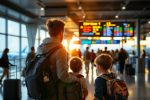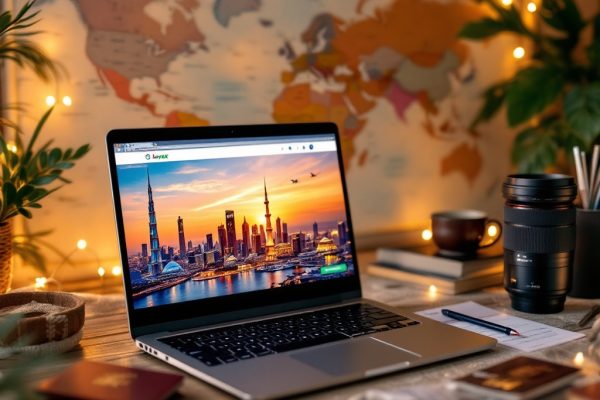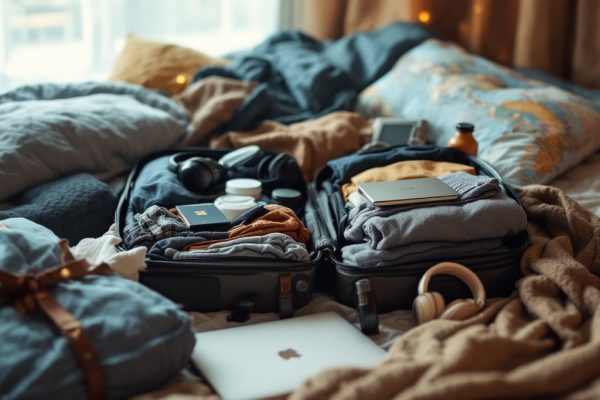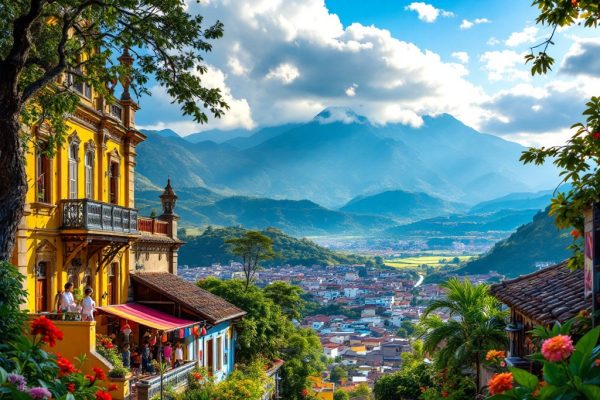Traveling to America: Tips from Visa Requirements to Tourist Attractions
Dreaming of an American adventure? From bustling cities to breathtaking national parks, the USA awaits! This comprehensive guide covers everything you need for a smooth trip, from visa requirements and ESTA applications to navigating customs and exploring top attractions like Yellowstone and the Grand Canyon. Learn about essential travel insurance, smart packing tips, and local customs. Start planning your unforgettable US experience today!
Important information

- Passport Validity: Ensure your passport is valid for at least six months beyond your planned stay.
- Visa Requirements: Check if you need a visa based on your nationality. The Visa Waiver Program (VWP) allows citizens of over 40 countries to travel visa-free for up to 90 days, but requires ESTA authorization.
- Travel Insurance: While not mandatory, travel insurance is strongly recommended due to high US healthcare costs. It covers medical emergencies, cancellations, and lost baggage.
- Money Matters: The currency is the US dollar (USD). Check exchange rates. Tipping is customary (15-20% in restaurants). Credit cards are widely used, but carry cash for smaller purchases.
- Local Laws and Customs: Research and respect local laws and customs. Be aware of tipping etiquette and dress codes. Asking questions shows respect and enhances your experience.
Traveling to America: Essential Preparations and Requirements
Planning a trip to the USA? Here’s what you need to prepare:
Check your passport validity. It must be valid for at least six months beyond your intended stay.
Determine your visa requirements. These vary based on your nationality.
Explore the Visa Waiver Program (VWP). Citizens of over 40 countries can travel visa-free under the VWP.
Consider a B-2 tourist visa or a B1/B2 visa. These are commonly required for those not eligible for the VWP. The B1/B2 visa covers both business and tourism.
Canadians and Bermudans usually travel visa-free for leisure. Check specific regulations to confirm.
Finalize essential trip details. Don’t forget travel insurance, accommodation bookings, and a flexible itinerary.
Have a fantastic trip!
Visa Requirements and the Visa Waiver Program
Traveling to the U.S.? Here’s what you need to know:
Visa Waiver Program (VWP)
Citizens of participating countries can visit the U.S. for tourism or business for stays of up to 90 days without a visa through the VWP. However, they must obtain a valid Electronic System for Travel Authorization (ESTA) before traveling.
Traditional Visa
If you’re not eligible for the VWP, or plan a longer visit, you’ll need a visa, such as the common B-2 tourist visa. This typically involves completing an application, paying a fee, and attending an interview at a U.S. embassy or consulate.
Understanding ESTA and B2 Visa Application
Planning a trip to the United States? Citizens of 40 countries traveling for business or tourism for under 90 days can bypass the visa process through the Visa Waiver Program (VWP). However, pre-travel authorization via the Electronic System for Travel Authorization (ESTA) is mandatory. If you are not eligible for the VWP or plan to stay longer, a B-2 tourist visa is required.
Complete the DS-160 form.
Pay the required fee.
Attend an interview at a U.S. embassy or consulate.
Remember to bring your passport, photographs, and documentation of your financial stability to the interview.
The Importance of Travel Insurance
Travel insurance, while not obligatory for US trips, is highly recommended. It protects you from unexpected problems like medical emergencies, trip cancellations, and lost baggage. US healthcare costs can be substantial, making travel insurance with medical coverage essential for managing medical expenses and even repatriation. It also helps with other unforeseen costs, providing financial security and peace of mind.
Arrival and Customs Procedures
Ensure your passport and any necessary visa are readily available.
Prepare your customs declaration form in advance.
Answer all questions from CBP officers truthfully.
Declare everything you’re bringing.
Be aware of prohibited items, such as certain agricultural products and foods. CBP’s website details these regulations, and it’s wise to check for updates before your trip.
Arrival Procedures and Required Documentation
Upon arrival in the United States, have your passport and visa ready for inspection.
You may also need a customs declaration form.
Answer any questions from customs officials truthfully.
Declare everything you are bringing into the country, as certain items are prohibited.
Customs Declaration and Prohibited Items
To ensure a smooth customs experience, declare everything you’re bringing into the US. Review the prohibited items list, which includes certain foods, plants, and other goods, to avoid potential issues.
Planning Your Visit: From Accommodation to Itinerary
Secure your lodging early, especially during peak season. You’ll find a wide variety of options, from hotels and motels to resorts, vacation rentals, and charming bed and breakfasts. Consider your priorities: location, budget, amenities, and proximity to attractions.
A well-planned itinerary is crucial for a smooth trip. List your destinations, including activities and timeframes. Research essential details beforehand, such as opening hours, ticket prices, and transportation options. Prioritize must-see attractions, but remain flexible.
Explore transportation options at your destination. Public transport, like buses, subways, and trains, is often cost-effective in cities. Renting a car provides greater flexibility, especially in areas with limited public transport. Weigh the cost, convenience, and accessibility of each option.
Timely Reservations for Accommodation
Planning a trip? Secure your accommodations early, especially during peak season. Booking in advance guarantees availability and often unlocks better rates and a wider selection of options. Last-minute bookings can be a gamble: choices dwindle, and prices often surge. Avoid the stress and lock in your stay early for a smoother, more relaxed travel experience. Knowing your lodging is secured provides invaluable peace of mind upon arrival.
Benefits of Booking Accommodations in Advance
- guaranteed availability,
- better rates,
- wider selection of options,
- smoother, more relaxed travel experience,
- peace of mind.
Disadvantages of Last-Minute Bookings
- limited choices,
- higher prices,
- added stress.
Building a Travel Itinerary
Planning your perfect getaway? First, determine what type of trip you desire. Are you drawn to bustling city life, the serenity of nature, or a mix of both? Next, research potential destinations, considering your budget, the time of year, and your interests.
Choose your destination. Once you’ve narrowed down your options, select the destination that best suits your needs and preferences.
Create a must-see list. Compile a list of attractions, restaurants, and activities you want to experience. Include museums, local eateries, parks, and historical sites.
Plan your itinerary. Allocate sufficient time for each activity, accounting for travel time between locations. Remember to allow for flexibility and spontaneous adventures.
Book accommodations and transportation. Reserve your accommodations and transportation in advance, especially if traveling during peak season.
Enjoy your trip!
Transportation Options: Public Transit and Car Rentals
Getting around major cities is easy thanks to public transport options like buses, subways, and trains, providing convenient access to attractions. Ridesharing apps offer another practical alternative. To explore areas outside the city, consider renting a car, offering flexibility to visit places like national parks. For traveling between cities, domestic flights are a good option. Researching transportation options at your destination beforehand will ensure a smoother travel experience.
Exploring Tourist Attractions and National Parks
Experience the best of America’s urban landscapes. From the inspiring presence of the Statue of Liberty to the electric buzz of Times Square, New York City pulses with excitement.
Los Angeles glitters with Hollywood allure and boasts stunning beaches.
San Francisco charms visitors with iconic landmarks like the Golden Gate Bridge and the infamous Alcatraz.
Journey into America’s breathtaking national parks. Witness Yellowstone’s awe-inspiring geysers and steaming hot springs.
Explore the Grand Canyon’s dramatic rock formations, a testament to geological time.
Yosemite offers a different kind of majesty, home to giant sequoias and cascading waterfalls.
Top City Destinations: New York City, Los Angeles, and San Francisco
New York City boasts iconic landmarks like the Statue of Liberty and the Empire State Building, along with diverse cultures, amazing dining experiences, and world-class entertainment.
Los Angeles thrives as the heart of Hollywood and the entertainment industry, offering diverse cultures, amazing dining experiences, and world-class entertainment.
San Francisco offers attractions such as the Golden Gate Bridge and the infamous Alcatraz Island, in addition to diverse cultures, amazing dining experiences, and world-class entertainment.
National Parks: Yellowstone, Grand Canyon, and Yosemite
Yellowstone National Park, primarily in Wyoming, is renowned for its geothermal marvels, including geysers and hot springs, alongside diverse wildlife and stunning landscapes.
Grand Canyon National Park in Arizona showcases the canyon’s immensity and colorful rock layers, carved by the Colorado River.
Yosemite National Park, in California, boasts iconic granite cliffs, giant sequoias, and breathtaking waterfalls. Each park provides a distinctive experience.
Key Travel Tips for a Smooth Experience
Before starting your journey, learn about local laws and customs for a smooth and respectful trip. Consult your doctor about necessary vaccinations and health precautions. Pack essential medications and a first-aid kit, and stay hydrated and careful about food choices. Research your destination’s safety and take precautions against theft, such as using hotel safes.
Inform your bank about your travel plans and check current exchange rates. Credit cards and traveler’s checks are convenient, but also research US tipping customs.
Track your expenses and have a backup payment method.
Understanding Local Laws and Customs
Understanding US laws and regulations is crucial for a smooth trip. Respecting local customs and traditions enriches your travel experience. Cultural sensitivity fosters positive interactions with locals. Being mindful of practices like restaurant tipping, a seemingly small gesture, can have a significant impact. Familiarize yourself with local dress codes, and don’t hesitate to ask questions; locals often appreciate the interest and are happy to share their customs. This shows respect and builds rapport. Planning ahead and researching cultural norms contributes to a more fulfilling and enjoyable journey.
Legal Matters
Grasping US laws and regulations is essential for a hassle-free trip.
Cultural Respect
Respecting local customs and traditions greatly enhances your travel experience, fostering positive interactions with locals.
Practical Tips
- Restaurant Tipping: Be mindful of local tipping customs, as it’s a small gesture with a big impact.
- Dress Codes: Familiarize yourself with local dress codes.
- Asking Questions: Don’t hesitate to ask locals about their customs; they often enjoy sharing and appreciate the interest.
Planning Ahead
Planning and researching cultural norms beforehand contributes to a smoother and more enriching travel experience.
Health Precautions and Safety Considerations
Secure travel insurance to cover potential medical emergencies, especially considering the high cost of US healthcare. This is crucial for protecting your health and finances during unexpected situations.
Familiarize yourself with local laws and customs at your destination. This knowledge will enhance your safety and help you avoid unintentional cultural misunderstandings.
Consult travel advisories for up-to-date information on health and safety risks specific to your destination. Being aware of potential hazards allows you to take necessary precautions.
Ensure your vaccinations are current and up-to-date. Consult with your healthcare provider about recommended vaccinations and any necessary health precautions for your trip.
Currency, Tipping Etiquette, and Money Matters
The official currency is the US dollar (USD). Exchange rates fluctuate, so check them before your trip. Tipping is customary in the US. For instance, restaurant servers typically receive 15-20% of the pre-tax bill for satisfactory service. Other service providers, such as taxi drivers and hairdressers, also anticipate gratuities. Credit and debit cards are widely accepted for most transactions. However, carrying cash is still recommended for smaller purchases or businesses that may not accept cards. Notify your bank of your travel plans to avoid any issues with your cards being blocked.














